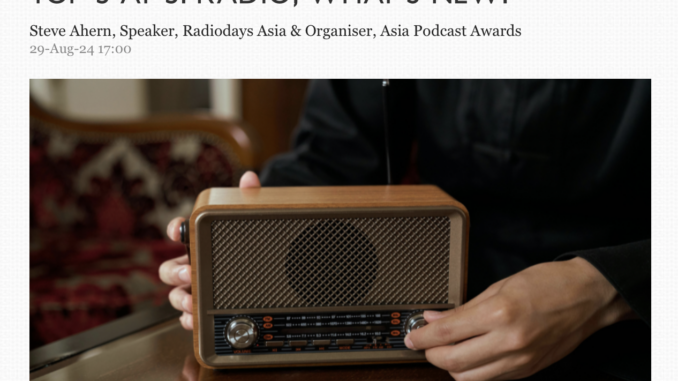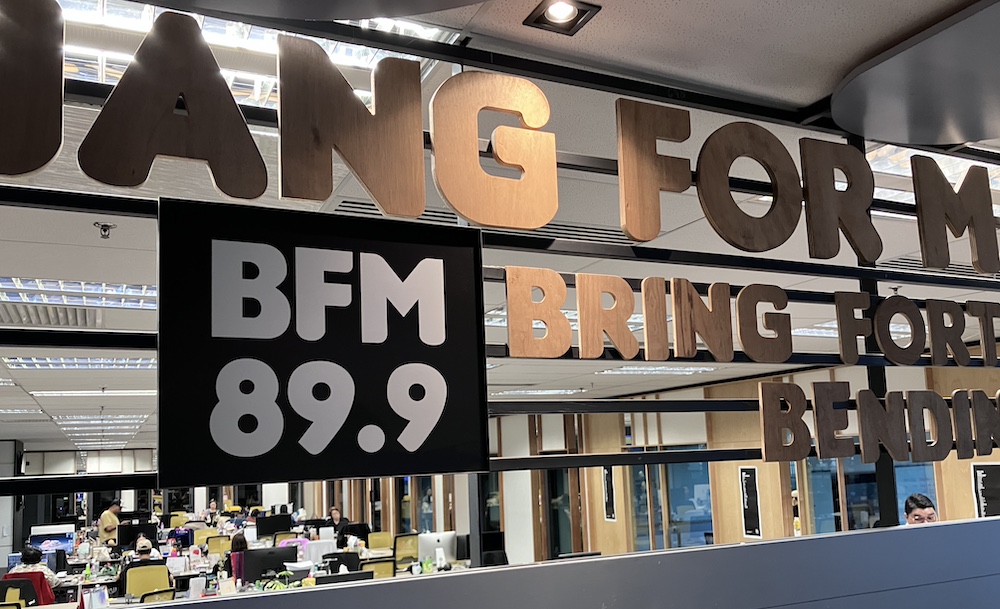
“Radio has adapted to the new audio landscape and still provides a safer environment for brands than many online digital platforms,” Steve Ahern told BFM’s drive show in Kuala Lumpur.
Ahern, one of the organisers of RadioDays Asia, was speaking to Sharaad and Dash on BFM’s Drive show, in the lead up to next week’s conference.
Asked whether radio is dead, Ahern replied, “lucky for you the answer is no, otherwise you’d be out of a job!”
Radio has adapted to the new audio environment, as it adapted to previous technological changes. As long as they have ears, people will still want audio content, it is just a matter of how they get it, according to Ahern. The latest adaptations include how radio had widened out its audio offering to develop podcasts and catch-up audio technologies, and how it is integrating AI into its production workflows.
“There’s no doubt that digital platforms have widened the offerings for audiences, which is a good thing, and there is no doubt audiences and advertisers have embraced new digital platforms, but the growth of one doesn’t mean the death of the other.
“There are 20 million people who listen to the radio in Malaysia according to your latest survey, they listen for 12 hours a week on average and the most popular listening times are breakfast and drivetime. Of course they also use social media, they search for content and they view websites, in fact they often do that at the same time as they’re listening to radio, so radio is not dying. Don’t believe everything you read about that on the internet, often written by the platforms that benefit most from spreading that view.
“Media is now a rich and competitive landscape, that’s a good thing.”
Asked about music streaming, Ahern pointed out that audiences have always chosen their own music, back to the days of vinyl records there has always been a proportion of audio listening time given to listening to your own music and a proportion listening to radio. “They serve different purposes, live radio keeps you in touch with what”s going on from a trusted real person who you know, music listening is chosen for mood or activity. They’re both important and audiences mix and match them according to what they want.”
Dash pointed out that playlisting music is a big drawcard for people to consume the songs they love in the way they want to. Ahern agreed, saying that playlisting is not new, but streaming apps now make it much easier. “I used to do playlisting too, I’d record the songs I liked in order onto a cassette… it’s not a new thing, it’s just that the technology has changed. Audiences have always split their time between different modes of listening to radio, news, talk, music, recordings…”
Will AI put radio people out of a job? Ahern says it will certainly change the types of jobs in the behind the scenes part of the radio business, making some of them easier and making some of them obsolete, but he sees it as an exciting evolution of the audio industry.
“It can make editing much easier and quicker, you can clean up background noise and tighten answers much faster than manual editing…
“For your kind of business news-talk radio format, synthesised AI voices may be able to give you simple reports like reading out the latest stock exchange prices, but the live interviews and talk you do will be difficult for AI to replicate. As for music radio, it will be possible for GenerativeAI tools like ChatGPT to put together simple scripts about a music artist and to use a synthesised voice to say them, but this isn’t new it has been happening in voice tracking systems in one way or other for a while now.”
Discussing the advertising downturn, Ahern said declining ad sales is a world wide problem at the moment for established media companies.
“A lot of money is going to digital that’s for sure, but are advertisers really aware how that money is being spent? Are their ads appearing in a brand safe environment, or are they appearing next to vile social media troll comments or radical or obscene videos? Established broadcast companies have long ago solved those problems with regulations and codes of practice to make sure the environment for advertisers is safe for their brands, advertisers are beginning to understand that this is certainly not the case with many digital media platforms and they are rethinking their ad spend mix.”
The Radiodays Asia conference begins next Monday, last minute registrations are still open.
Steve Ahern, an internationally recognised audio industry expert and trainer, will present three sessions at Radiodays Asia, including a half day workshop on Sustainability.
Listen to the Bfm interview, from 22 minutes into the 5 o’clock hour.

